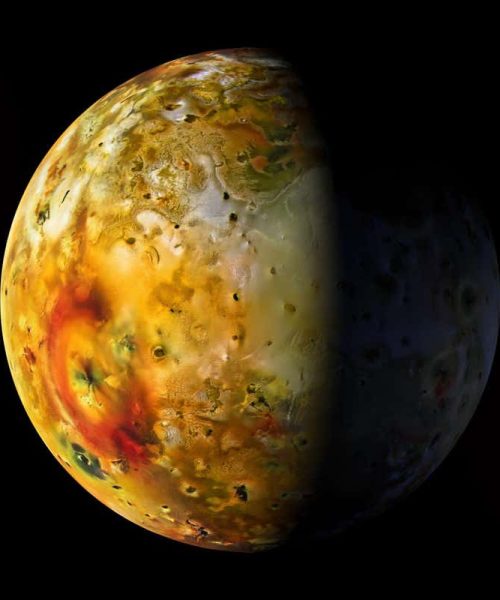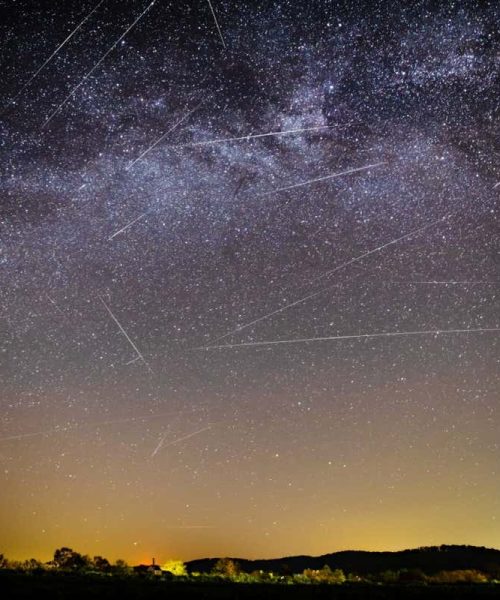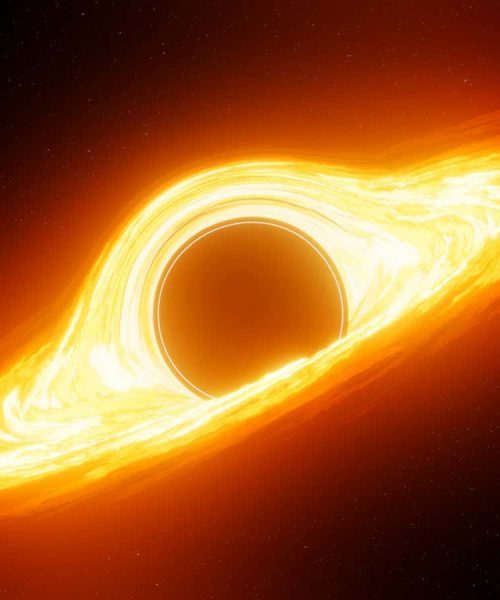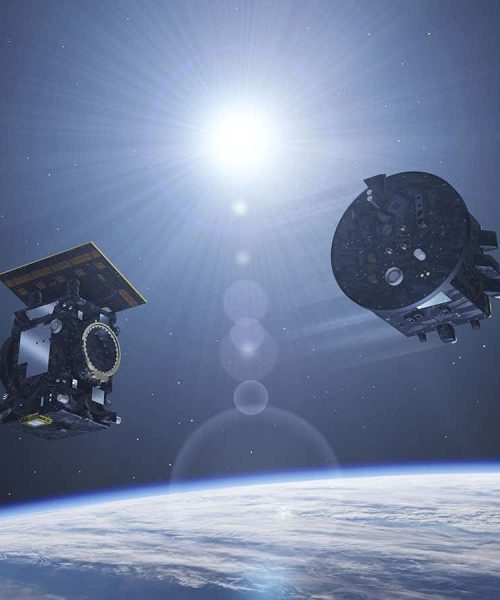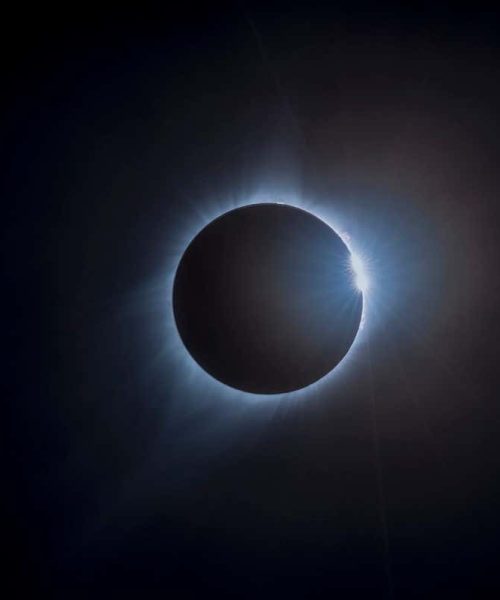
The supernova Refsdal with a galaxy cluster
NASA, ESA, S. Rodney, FrontierSN team, T. Treu, P. Kelly, GLASS team, J. Lotz, Frontier Fields team, M. Postman, CLASH team, Z. Levay
A distant supernova spotted through a strange quirk of gravitational lensing has been used to measure the expansion of the universe. The result adds an unexpected twist to a long-standing tension.
Gravitational lensing occurs when the light from a distant object is bent and warped by the gravity of a massive and relatively nearby object. This can result in several images of the distant object appearing around the nearby one, similar to the patterns you might see when looking through a warped lens such as the bottom of a water glass. Because the light from the background object takes a different path to form each image, those images can appear to us at different times.
Patrick Kelly at the University of Minnesota and his colleagues used this strange effect to calculate the Hubble constant, a measure of the universe’s rate of expansion. They did so with the light from supernova Refsdal, which is gravitationally lensed by a nearby galaxy cluster. It was first discovered in 2014, and a new image of the supernova appeared in 2015, allowing the researchers to use the time delay between the images to calculate the rate at which the universe’s expansion is carrying it away from Earth.
Advertisement
There are two main ways of measuring the Hubble constant. The first, called the cosmic distance ladder, relies on measurements of relatively nearby objects to determine how fast they are moving away from Earth. The second uses observations of the cosmic microwave background (CMB), which is relic light left over from the big bang, so the measurements need to be extrapolated forwards in time using cosmologists’ best models of the universe.
The two methods have disagreed for decades, in what is called the Hubble tension: the distance ladder results in a Hubble constant of 73 kilometres per second per megaparsec (km/sec/mpc), and the CMB method gives a value of about 67 km/sec/mpc. Researchers have long hoped that independent methods could help resolve this tension, but they haven’t been successful yet. This new measurement using supernova Refsdal gives a value of about 67 km/sec/mpc, in agreement with the CMB method despite being based on observations of an individual object like the distance ladder method.
The new result doesn’t rule out the higher value, but it does mean that the models used to study gravitationally lensed objects hang in the balance. “If the value of the Hubble constant turns out to be 73 like the local measurements would indicate at the moment, then there has to be something faulty in our understanding of galaxy cluster lenses, and these models are used routinely to study the distant universe,” says Kelly.
The researchers are following up on other lensed supernovae now to see if they can get more measurements using this method, and other teams are hard at work with other independent ways of measuring the Hubble constant as well. If they don’t find a way to make the measurements agree with one another, we may need entirely new models of exotic physics to explain what is really going on.
Topics:
